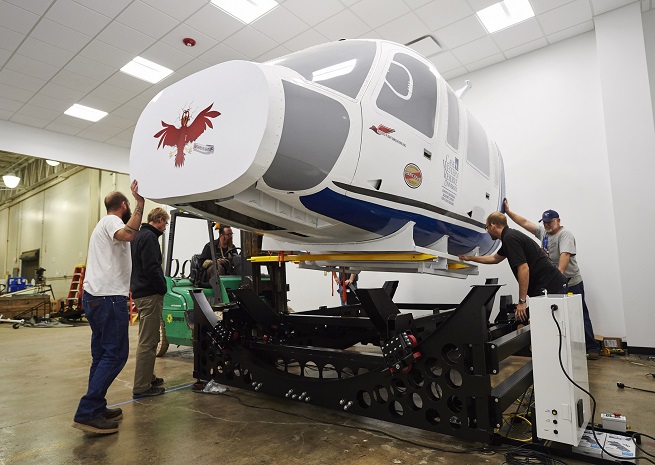
Things are about to get a lot more realistic for nursing students at Case Western Reserve University in Cleveland.
This month students in the university’s acute nurse practitioner program will be doing a portion of their training in a helicopter cabin simulator built specifically for the task by Redbird Flight Simulations. Despite typically making motion platform pilot training devices, Redbird’s helicopter cabin simulator fit the nursing program’s objectives perfectly, said flight nursing program director Stephanie Steiner.
“What sets it apart is the motion,” she said. “Static helicopters are OK, but this really tricks your brain to think you are actually flying.”
Case Western’s program is the first in the nation devoted specifically to training flight nurses who work in either fixed-wing or rotorcraft environments. Steiner said the differences are vast, starting with how the nurses approach care. Most nurses follow a protocol approach, where they follow a set of best practices or standards. “We have the philosophy that the care should fit the patient, and each nurse should have that flexibility,” she said.
Students in the program have in past years been exposed to a practical lab, learning both in a stationary helicopter and shadowing on some flights. But the new simulator will allow them to train through a number of unique scenarios, from various patient emergencies to aircraft emergencies. Steiner said the simulator will expose the students to real-time scenarios and enable them to practice real variables, including weather.
Redbird’s Jerry Gregoire said that’s possible thanks to the way the software was designed. “We actually went in there and recorded a flight in actual time,” he said.
The simulator uses Redbird’s helicopter motion platform mated to a real Sikorsky S-76 fuselage. Everything works in the fuselage, including the lights, electrical equipment, and oxygen. For a visual engine Redbird put a special film on the windows. When the device isn’t running you can see through it, but when it’s active the visual engine projects the outside world, immersing the student.
Redbird donated the device as part of a program that gives employees the chance to vote on one simulator donation per year. Hartzell Propeller President Joe Brown made it possible, including some personal help setting it up on site.
“Everyone with experience says it’s very real,” Steiner said.



